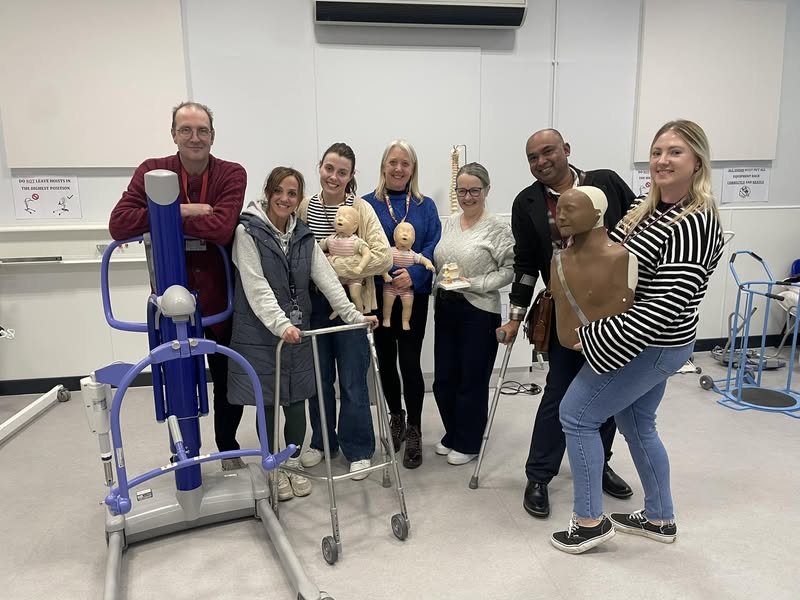Moving and Handling People Training For NHS, Ambulance & Emergency Services

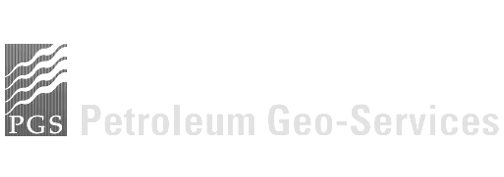

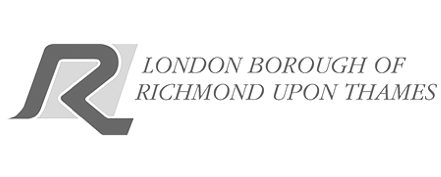


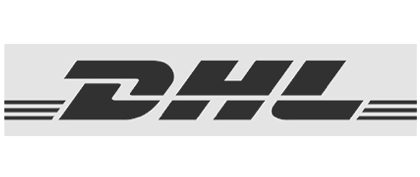
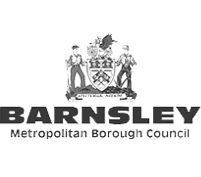




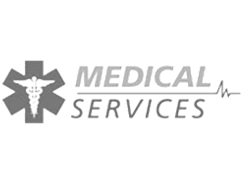
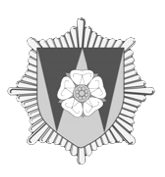
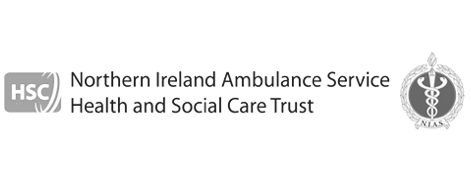
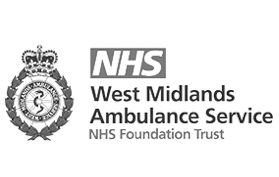

Course Overview
Solutions annually train hundreds of people from both the ambulance and fire sectors including student paramedics, Ambulance and Fire training officers, University lecturers and team leaders from patient transport services. The moving and handling ambulance sector course is only ever led by former ambulance paramedic tutors with decades of experience and subject matters expertise.
Solutions have been national advisers to the UK emergency service since 1997 when they were called upon by the H.S.E. to give guidance to ambulance trusts that had been either prosecuted or received improvement notices from the H.S.E. in respect of non-compliance with the Manual Handling Operations Regulations 1992.
Our team are Internationally recognised contributors into the research of “what constitutes effective moving and handling training”. This research was performed by the Ergonomics Department at Loughborough University.
Solution
Our comprehensive manual handling training solutions include bespoke Train the Trainer programs, access to our leading online theory course “Moving People," classroom-based training, refresher training, and blended learning options that combine online and face-to-face sessions. We focus on proper techniques, handling practice and practical assessments to ensure participants gain the necessary skills to handle tasks safely and effectively.
We offer professional qualifications and awards in moving and handling ambulance sector which are on the regulated qualifications network:
- QNUK Level 2 Award in Moving & Handling People Safely (RQF)
- QNUK Level 3 Award in Moving & Handling for Trainers (Emergency Services) (RQF)
- QNUK Level 3 Award in Education & Training (RQF)
- QNUK Level 3 Award in Manual Handling Risk Assessment (RQF)
Successful completion of our moving and handling ambulance sector courses will result in an award on the regulated qualifications framework. The award will depend on the course completed.
Available Moving and Handling Ambulance Sector Course Options
Solutions conduct Nationwide ambulance-specific moving people training programmes open to any individual or organisation.
Moving People Train the Trainer – Full 4 day Programme, aimed at the emergency services (ambulance, fire, CFR).
The fee is £999 per delegate and includes the provision of the Q.N.U.K. Level 3 “Moving and Handling Trainers” award (Emergency Services) R.Q.F which is on the regulated qualifications framework. All delegates will also receive post training support for a year, including access to our industry leading, sector bespoke training materials to assist with their redelivery of this training.
Moving People Train the Trainer – Full course 4 days
Birmingham City University – B15 3TN
Moving People Train the Trainer 1 day update
Airdrie Scotland – 22nd of April 2025
Contact us for further details or to book – 07751645724
All of our CRT training team are members of the Institute of Conflict Management.
Our training solutions include bespoke,
. Classroom-based Conflict Resolution training (induction courses, train the trainer), with the option of including disengagement/holding skills & techniques
. Blended Learning, whereby the theoretical skills are learned online with the option for your staff to meet with a trainer to learn the disengagement/holding skills
Depending on your requirement, we can offer the following awards which are on the Regulated Qualifications Framework:
• Level 2 – Conflict Management
• Level 3 – Delivery of Conflict Management Training (Train the Trainer)
What our learners say – Train the Trainer Course
Of the last 100 Moving and Handling Train the Trainer courses:
92 learners rated the quality of the trainer, quality of resources, training methods and course contents as being “Extremely Effective” in assisting the “trainee” to learn and the remaining 8 learners gave a rating of “Very Effective”.
We are proud to boast that all 100 stated that they would recommend this course to others!
What our learners say –
e-learning Course
We gather learner feedback for every completed online course, requesting ratings across 16 dimensions on the effectiveness of the course, 92% have rated the course as good or above!
Moving & Handling Training Questions
What Is The Importance of Manual Handling Training?
Manual handling training is crucial for ensuring the safety and well-being of both healthcare professionals and patients. The Manual Handling Operations Regulations 1992 emphasise the importance of providing adequate training to employees to minimise the risks associated with manual handling.
Effective training via our moving and handling ambulance sector courses enables healthcare professionals to develop the necessary skills and knowledge to handle patients safely, reducing the risk of musculoskeletal disorders and other injuries. Moreover, training helps to promote a culture of safety and encourages employees to take an active role in maintaining a safe working environment.
By investing in comprehensive manual handling training, organisations can significantly enhance occupational health and safety standards, ensuring that both staff and patients are protected from the dangers of poor moving and handling practices.
What Are The Roles and Responsibilities?
Employers and employees have distinct roles and responsibilities when it comes to manual handling. Employers are responsible for providing a safe working environment, conducting thorough risk assessments, and ensuring that employees receive adequate training and equipment to perform their duties safely. This includes offering regular training sessions, updating safety protocols, and providing the necessary tools to facilitate safe moving and handling.
Employees, on the other hand, are responsible for adhering to safe moving and handling practices, reporting any incidents or concerns, and actively participating in training and education programs. By understanding and fulfilling their respective roles and responsibilities, employers and employees can work together to create a safe and healthy work environment, minimising the risk of injuries and promoting overall safety.
How To Prevent & Report On Accidents?
Accident prevention and reporting are critical components of a safe and healthy work environment. Employers should establish effective procedures for reporting incidents and near misses, ensuring that employees feel comfortable reporting any concerns without fear of retribution.
This open communication is vital for identifying potential hazards and preventing future accidents. Employers should also conduct thorough investigations into incidents and implement measures to prevent recurrence. By promoting a culture of safety and encouraging open communication, employers can reduce the risk of accidents and injuries.
Regular training on safety protocols and proper handling techniques via our moving and handling ambulance sector courses further supports this goal, ensuring that all staff members are well-prepared to maintain a safe working environment.
How To Create a Safe Environment?
Creating a safe environment is essential for preventing accidents and injuries. Employers should conduct regular risk assessments to identify potential hazards and implement measures to mitigate them. This may include providing adequate lighting, ensuring that floors are clear of obstacles, and supplying suitable equipment and training.
Employers should also ensure that employees have access to safe systems of work and that they are aware of the risks associated with manual handling. By creating a safe environment, employers can reduce the risk of accidents and injuries and promote a culture of safety.
Regular updates to safety protocols and continuous education on best practices are key to maintaining a safe and compliant workplace.
What Are The Best Practices for Emergency Situations?
In emergency situations, it is essential to have best practices in place to ensure the safety of both healthcare professionals and patients. Employers should establish clear procedures for emergency situations, such as evacuating patients from a building or responding to a medical emergency.
Regular training via our moving and handling ambulance sector courses on these procedures ensures that employees are well-prepared to act swiftly and safely. Employers should also ensure that employees have access to the necessary equipment and resources to handle emergencies effectively.
By having best practices in place, employers can reduce the risk of accidents and injuries in emergency situations and promote a culture of safety. Continuous review and practice of emergency protocols are crucial for maintaining readiness and ensuring the well-being of all involved.
We would love to hear from you.
Please send us a message by filling out our form, call us or feel free to send us an email directly and we will be in touch shortly..
enquiries@solutionstraining.co.uk
Solutions Training & Advisory Ltd, Unit 3, Investment House, 28 Queens Road, Weybridge, Surrey, KT13 9UT
Solutions have designed innovative pieces of moving and handling kit unique for the ambulance community
Used by many NHS Trusts Nationwide


